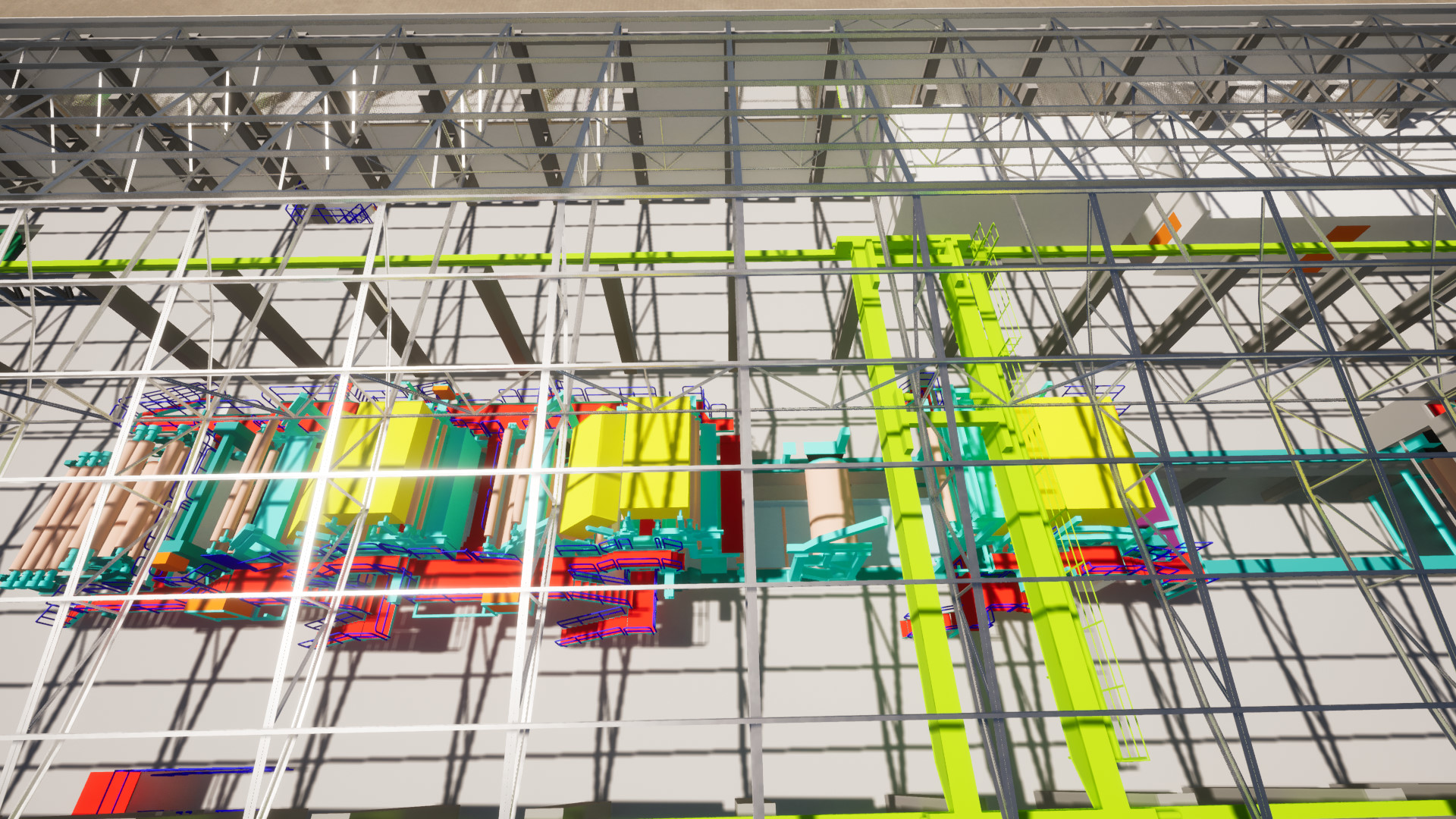3D Laser Scanning & Modeling in Plant Engineering

TitlePrecise planning & documentation - Laser scanning in plant construction
In plant construction, precise as-built data is essential for efficient planning of extensions, conversions and maintenance work. 3D laser scanning enables existing systems to be recorded quickly and with high precision – even in complex or difficult-to-access areas.
The resulting point clouds can be seamlessly integrated into CAD systems to create digital twins, detect collisions at an early stage and optimize the entire planning process.
TitleWhat is a digital factory?
The digital factory is a virtual, three-dimensional copy of a planned or existing factory. It includes all machines, production lines and equipment as well as processes and workflows. Thanks to the digital factory, you get a complete overview of your factory and can plan changes or optimizations precisely and efficiently in a virtual environment.
TitleLaser scanning in digital plant engineering
Existing factories and plants often have incomplete or outdated plans. These gaps make planning difficult and often require costly interruptions. This is where laser scanning comes into play: it enables non-contact, fast and precise 3D capture of your plant – even during ongoing production. The data obtained allows engineers and planners to efficiently modernize, expand or convert a plant without interrupting ongoing operations.
Using modern software, the scanned data is extracted, analyzed and transferred to a CAD program. This allows all geometric data of machines, pipes and other components to be visualized and integrated directly into the planning processes.
TitleAdvantages of laser scanning for the digital factory
Laser scanning offers a multitude of advantages for the planning and optimization of factories and plants. Whether during the planning phase or during operation, the digital capture of the factory enables precise visualization and simulation of production processes, collision checks and layout adjustments. The most important advantages include
- Simple & fast capture: Complex systems are fully measured in the shortest possible time.
- Highest accuracy & completeness: The captured data is precise and photorealistic.
- Non-contact capture: 3D scans are performed without interfering with ongoing operations.
- Flexible & reproducible: Scans can be repeated at any time and used for future planning.
TitleOptimization potential thanks to the digital factory
The digital factory allows you to simulate and optimize production processes. Whether you are integrating an additional robot, optimizing the ventilation system or planning conversion measures – the digital factory offers you the flexibility to test all changes virtually before they are implemented in reality.
The continuous updating of geometry data ensures that you always have access to the latest information to make informed decisions.
TitleAreas of application for 3D laser scanning in plant engineering
As-built survey & documentation
Many industrial plants have grown over decades and plans are often outdated or incomplete. With 3D laser scanning, existing facilities can be recorded quickly and precisely to obtain up-to-date as-built data.
Conversions & modernizations
Precise as-built data must be available before expanding or modernizing a facility. 3D scans enable detailed planning, avoiding costly collisions and unexpected problems.
Pipeline & system planning
Precise planning is crucial, especially for complex piping systems. Laser scanning provides the basis for collision checks and facilitates the integration of new components into existing structures.
Maintenance & servicing
Regular 3D scans allow wear and tear or changes to be detected at an early stage. This allows maintenance work to be planned in a more targeted manner and unplanned downtime to be avoided.
Digital twins & simulations
By creating a digital twin, engineers and operators can carry out simulations, for example to optimize production processes or analyse energy consumption.
Dismantling & disassembly
Detailed documentation of existing structures is essential for the safe and efficient dismantling of plants. 3D scans help to create precise demolition or dismantling plans.
TitleThe future of factory planning with digital twins
Digitalization is revolutionizing plant engineering – and digital twins play a central role in this. A digital twin is an exact, virtual image of a real plant based on precise 3D scans. By combining this with real-time data, production processes can be simulated, bottlenecks identified at an early stage and optimization potential exploited.
With digital twins, factories can be planned, expanded and converted more efficiently – long before the first physical intervention. Companies benefit from shorter planning times, reduced costs and greater operational reliability. In the future, digital twins will increasingly be linked with AI and IoT technologies in order to control plants even more intelligently and make them more sustainable.



